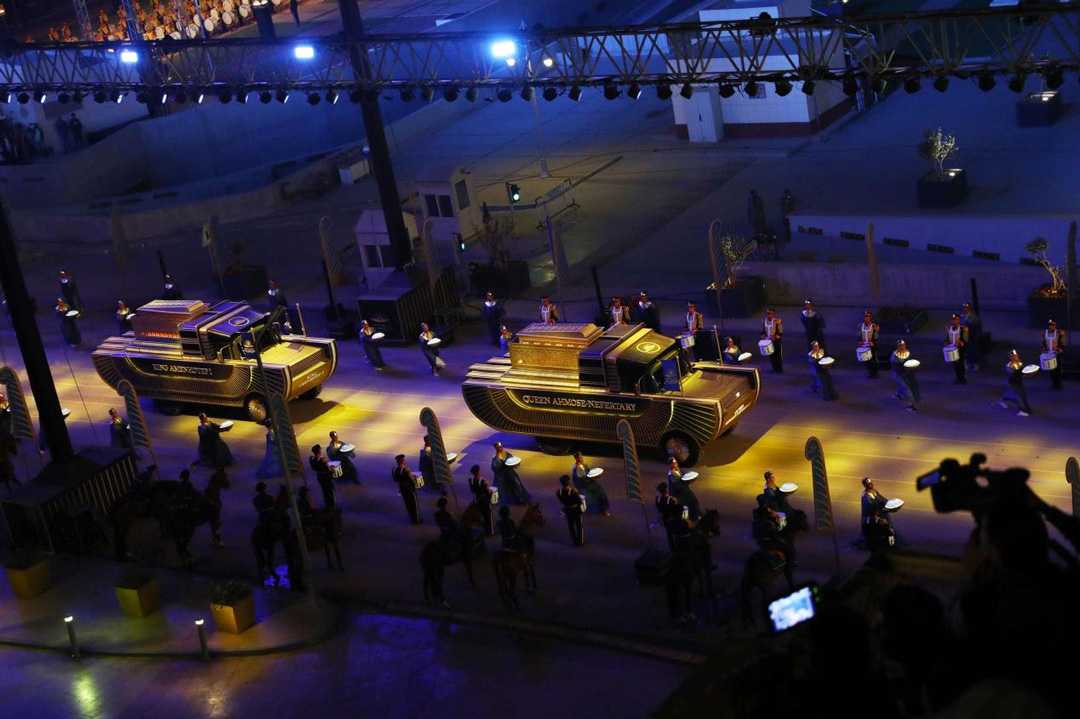L-Acoustics delivers for mummies on parade
- Details

The epic opening ceremony, which was supervised, directed and organised by Media Hub Saadi-Gohar Company, combined marching bands, cheering children, synchronised lighting, and a line-up of famous Egyptian actors and singers. The centrepiece of the productions was the transfer of the mummies of the ancient kings and queens of Egypt from their previous resting place in the Egyptian Museum to their new home.
Twenty-two mummies in chronological order of their reigns, from the 17th Dynasty ruler, Seqenenre Taa II, to Ramses IX, who reigned in the 12th Century BC, were paraded through in the heart of Cairo while Egyptians - and the world - watched and listened to the historic pageant. Each mummy sat in a nitrogen-filled box - to protect against decomposition caused by oxygen exposure - atop a decorated vehicle disguised to look like an Egyptian boat. Each of these vehicles was fitted with heavy shock absorbers to protect the fragile National treasures from possible bumps in the road, despite the road's recent re-pavement in preparation for the royal transport. For the occasion, L-Acoustics kept the pharaohs’ sound as golden as their sarcophagi.
"Through this whole parade, live music was played by an orchestra, and the mass choir (inside the orchestral hall in the NMEC) was broadcast widely," recounts Mafdy Thabet, chief engineer and System Designer of Dream Studio - Mafdy Thabet. Second engineer and co-designer Youssef Iskander also of Dream Studio assisted Mafdy for the event.
Dream Studio was contracted to create sound for the event by Key Films Productions - Adel Abdallah. "Our role was to provide front of house and monitor systems for the orchestra and the choir inside the NMEC Museum," explains Mafdy. "We also handled mix duties in the museum, the broadcast mix for TV, and the whole parade at Tahrir Square.”
At the new NMEC Museum, L-Acoustics systems covered both indoor and outdoor concert locations. The outdoor area was engineered by Remon Emad, with eight ground-stacked K2 cabinets - four per stack - deployed together with four KS28 subs. Within the orchestral hall, two hangs of six K2 were complemented with six KS28 subs, whilst four X12 provided front-fill.
Maestro Nader Abbassi conducted the United Philharmonic Orchestra with 80 musicians and 88 singers for a new composition by Egyptian composer Hesham Nazih. The modern music piece, set to song lyrics in old Egyptian, united diverse instrumental elements, including a replica of a Rababa, an ancient Egyptian stringed instrument, and a traditional Nai (pan flute), alongside the philharmonic ensemble. Two L-Acoustics Syva together with a further eight X12 provided monitoring for the performers on stage.
The entire event was transmitted live by the Ministry of Tourism and Antiquities, in addition to being carried on an additional 500 channels. “We transmitted multi-channels via the satellite to deliver the music from NMEC to Tahrir Square, with a separate channel transmitting the picture from Tahrir to the screen of the NMEC theater hall simultaneously, whilst the live broadcast transmitted the whole event to the TV channels,” explains Mafdy.
Egypt's authorities hope that the new museum, opening fully later this month, will help revitalize the tourism industry, which has suffered due to the pandemic. The new exhibits, housed in the NMEC Royal Hall of Mummies, designed to give the illusion of being in the Valley of the Kings in Luxor, are already open to the general public.
















